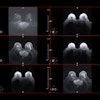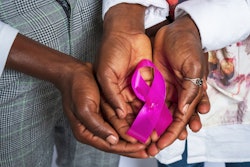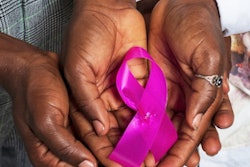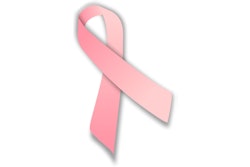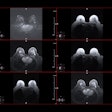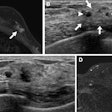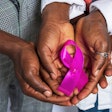Breast tumor trends are similar between women in Ghana and Black women in the U.S., suggest findings published October 13 in JAMA Network Open.
Researchers led by Brittny Davis Lynn, PhD, from the National Cancer Institute in Rockville, MD, reported that tumor incidence rates for women with ER-negative tumors are comparable between the two groups, with both rates being higher than for U.S. non-Hispanic white women.
“This finding may suggest increased susceptibility requiring elucidation in U.S. non-Hispanic Black and West African populations,” Lynn and colleagues wrote.
Women in sub-Saharan African nations are experiencing sharp increases in breast cancer incidence, particularly for ER-negative tumors. Prior reports suggest this may be due to changing risk factors. However, a lack of high-quality population-based studies limits assessment for these women, the researchers noted.
The Lynn team estimated age-standardized and age-specific rates of ER-negative breast cancer among Ghanaian women, U.S. non-Hispanic Black women, and U.S. non-Hispanic white women.
The team used data collected between 2013 and 2015 from two metropolitan areas of Ghana, Accra and Kumasi. It estimated ER-specific breast cancer incidence rates among women ages 18 to 74. For the U.S.-based cohort, the team used data from 17 registries in the Surveillance, Epidemiology, and End Results (SEER) program.
The study included 1,071 women in Ghana, of whom 51% had ER-negative breast cancer. The U.S. cohort included 18,321 non-Hispanic Black women (age range, 20 to 74 years; 29% ER-negative) and 103,227 non-Hispanic white women (age range, 20 to 74 years; 15% ER-negative) in SEER.
The researchers found that from 2013 to 2015, ER-negative age-standardized incidence rates were similar between the Ghanaian cohort and the U.S. non-Hispanic Black cohort, and that both cohorts had higher incidence rates than the U.S. non-Hispanic white cohort. However, Ghanaian women in the study had a significantly lower incidence rate of ER-positive cancers.
Comparison of breast tumor incidence between women in Ghana and the U.S. | |||
Tumor status | U.S. non-Hispanic white women | U.S. non-Hispanic Black women | Ghanaian women |
ER-negative incidence (per 100,000 women) | 24 | 43.1 | 42.3 |
ER-positive incidence (per 100,000 women) | 128.5 | 105.4 | 42.1 |
The authors suggested that the lower result for ER-positive incidence rates in Ghana may be due in part to limited mammography screening programs in the country. Mammography screening is more likely to detect ER-positive than ER-negative tumors.
For the ER-negative tumor findings, the authors called for more studies in this area since the reasons for this trend are unknown.
“Additional studies are needed to inform prevention and delineate genetic, behavioral, and social factors associated with the higher ER-negative breast cancer rates in populations with African ancestry, in which mortality rates remain among the highest globally,” they wrote.
Read the full study here.


